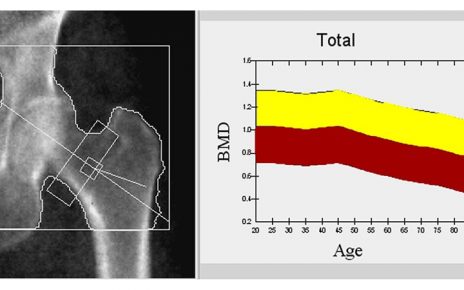Women exposed to higher levels of air pollution during pregnancy have babies who grow unusually fast in the first months after birth, putting on excess fat that puts them at risk of obesity and related diseases later in life, new CU Boulder research shows.
The study of Hispanic mother-child pairs, published this week in the journal Environmental Health, is the latest to suggest that poor air quality may contribute at least in part to the nation’s obesity epidemic, particularly among minority populations who tend to live in places with more exposure to toxic pollutants.
About one in four Hispanic youth in the United States are obese, compared to about 14% of white youth and 11% of Asian youth.
“Higher rates of obesity among certain groups in our society are not simply a byproduct of personal choices like exercise and calories in, calories out. It’s more complicated than that,” said senior author Tanya Alderete, an assistant professor in the Department of Integrative Physiology. “This study and others suggest it can also relate to how much of an environmental burden one carries.”
Previous research has shown pregnant women who smoke or are chronically exposed to air pollution tend to have smaller birthweight babies. In the first year of life, those babies tend to race to catch up, gaining weight unusually fast. Accelerated weight gain in early life has been linked to diabetes, heart disease and weight problems in childhood and adolescence.
“This period, either during pregnancy or shortly after birth, is a critical window of development and adverse exposures can program the infant to have a host of problems later in life,” said lead author William Patterson, a doctoral student.
To more closely examine how specific pollutants impact a baby’s growth trajectory, the researchers followed 123 mother-infant pairs from the Mother’s Milk Study, an ongoing trial in the Los Angeles region. About one-third were of normal weight pre-pregnancy, one-third overweight and one-third obese.
The researchers used data from the U.S. Environmental Protection Agency’s Air Quality System, which records hourly air quality data from ambient monitoring stations, to quantify their prenatal exposure to four classes of pollutants: PM2.5 and PM10 (inhalable particles from factories, cars and construction sites), nitrogen dioxide (an odorless gas emitted from cars and power plants) and ozone (the main ingredient in smog).
Then they followed the babies, periodically measuring not only their weight and height, but also how much fat they carried and where.
“We found that greater exposure to prenatal ambient air pollution was associated with greater changes in weight and adiposity, or body fatness, in the first six months of life,” said Patterson.
In some cases, pollutants seemed to impact males and females differently.
For instance, exposure to a combination of ozone and nitrogen dioxide in utero was associated with faster growth around the waist in females, while in males it was associated with slower growth in length and greater fat accumulation around the midsection.
In adults, excess fat around the midsection has been linked to heart disease and diabetes.
“It’s not just how much fat you carry but where–that matters,” said Patterson.
How can inhaling pollutants impact growth patterns of a mother’s unborn child?
Researchers believe those pollutants can inflame the lungs and, in turn, cause systemic inflammation of organs, impacting metabolic processes, such as insulin sensitivity, that can influence fetal development. Pollutants have also been shown to impact gene expression in infants, potentially having life-long impacts that could transcend generations.
The authors note that the study includes a relatively small sample size. And because the study included only Hispanic mothers, a larger trial is necessary to confirm results apply to other populations.
But Alderete said that in an increasingly diverse country, where racial minorities have been shown repeatedly to shoulder a higher burden of pollutions, it’s important to study how those toxins are influencing them.
In 2018, the EPA’s National Center for Environmental Assessment published a study showing that poor people and people of color are exposed to as much as 1.5 times more airborne pollutants than their white counterparts.
“Generally speaking, there have not been very many studies that really represent the diversity we have in the United States,” she said. “We want to fill that gap.”
Meantime, the researchers recommend pregnant women take extra precautions to minimize their exposure to air pollution by closing windows on high ozone days, not exercising outdoors at times of high air pollution and steering clear of activities alongside busy roadways.
University of Colorado at Boulder
Patterson, W.B., et al. (2021) Prenatal exposure to ambient air pollutants and early infant growth and adiposity in the Southern California Mother’s Milk Study. Environmental Health. doi.org/10.1186/s12940-021-00753-8.
Posted in: Child Health News | Medical Research News | Women's Health News
Tags: Air Pollution, Baby, Diabetes, Exercise, Gene, Gene Expression, Heart, Heart Disease, In Utero, Inflammation, Insulin, Lungs, Obesity, Ozone, Physiology, Pollution, Pregnancy, Prenatal, Research, Toxins
Source: Read Full Article



